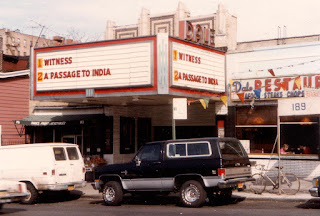One of my favorite miniseries of all-time is Ken Burns’s The
Civil War. For some strange reason, a particular segment headlined “The Age
of Shoddy” resonates with me today. When I initially saw the installment, I knew
what the word “shoddy” meant, but in a contemporary context only. I was unaware
that in the 1860s, “shoddy” referred to an uber-cheap fabric manufactured by
unscrupulous wartime profiteers—men who sold poor-quality uniforms at inflated
prices to the Union army. At the time, The New York Herald contrasted
the Silver Age and Golden Age of the world’s past with the unseemly Age of
Shoddy, which spawned a shoddy aristocracy of millionaires. These were human
beings at their most greedy amassing fortunes at the expense of those fighting
and dying on the battlefield.
A modern definition of shoddy in the Merriam-Webster
dictionary is “a pretentious vulgarity.” And this, I believe, is a term
befitting the current age. Last year, for example, New York City subway cars
were festooned with reminders of what courteous and civilized people shouldn’t
do in them. Advice on placards included covering one’s nose when sneezing, not
clipping one’s fingernails, and holding off for a spell on malodorous
repasts. After all, a subway car isn’t a dining car. Granted, there have always
been inconsiderate, loutish boors out and about, but the sheer number of them
nowadays is staggering. And technology isn’t helping the situation, either.

Yesterday, while riding the Number 1 train into Manhattan, I was reminded again of the times in which we live. The subway car I was in had gotten pretty crowded by the time two teenage girls, I’d guess—although they might have been a little older—appeared with their breakfast sandwiches in hand. Standing directly above me, they began unwrapping their fare. The wafting odors of the sandwiches remained both potent and entrenched in the congested setting.
One of girls loudly complained about her sandwich, but
didn’t say, “Pardon my French.” The worst of the boorishness was yet to come
when the conductor announced that from 72nd Street to Chambers Street, the
train would be running on the express track and only stopping at express
stations, which didn’t include the girls’ stop. They opted to ask a fellow
straphanger about their unanticipated predicament. “Where should we get off
now?” The rider fielding their question was a walking-and-talking stereotype, who didn’t
appreciate the unsolicited brain work heaped upon him. He angrily replied, “What are you asking me
for? The map’s right there!” Audibly perturbed, he pointed to a subway map,
which was—in fact—directly in front of the girls and, unfortunately, right above
my head as well.
“We just asked you a question,” the more combative of the
two girls said in response. “What’s your problem?” The put-upon
passenger out of central casting then walked over to the map and a comedic—were it a sitcom—back-and-forth
ensued. He was still visibly angry that he had somehow been lured into helping
these damsels in distress, but it was nonetheless his life mission now to sort
out the girls’ conundrum.
At ten o’clock in the morning, a man with boozy breath and
two girls munching on salami and egg heroes kibitzed over my head. I would have found the circumstances and
dialogue quite amusing on Sanford and Son. But it wasn’t Sanford and Son and I heaved a huge sigh of relief when
one and all exited at Times Square. The girls were looking for the A train,
which was simple enough to connect with, but the guy with the foul morning
breath was insistent that they absolutely needed to get on the R train to reach their
destination. “We ain’t goin’ on no R,” I heard one of them say as a parting salvo.
When I returned home, I switched on the news and saw clips of
my globetrotting president. The Age of Shoddy II, I thought, “a pretentious
vulgarity” for sure. Whether I’m walking on the street, riding in a train, or
tuning in the news, it’s an age like no other.















